The Rheinmetall model 1928 (designed by one Karl Heinemann and made in Switzerland) was one of the rifles tested by US Ordnance in trials that eventually settled on the Garand and Pedersen designs (and ultimately chose the Garand). The Rheinmetall rifle had a pretty interesting combination of features…
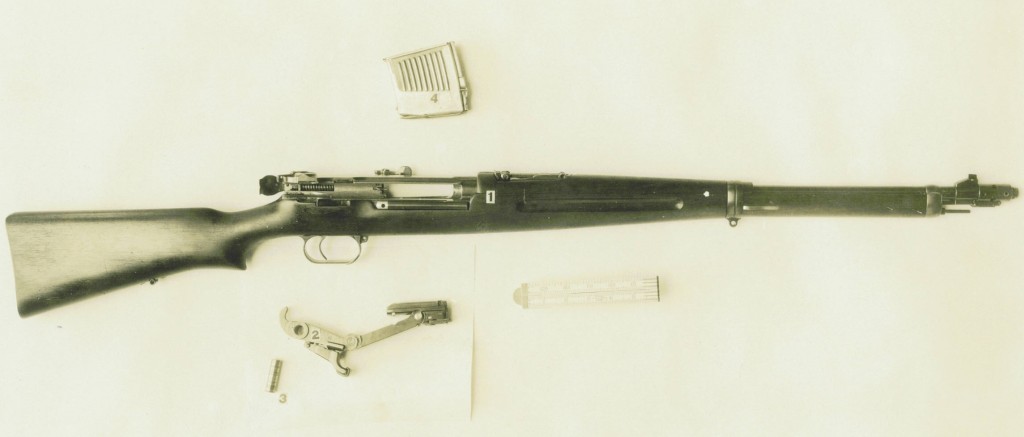
It was chambered for the .276 Pedersen cartridge, and used a detachable magazine that mounted horizontally on the left side of the rifle. As you can see in the above photo, it had a toggle-type bolt, but it was neither short recoil like the Luger nor delayed blowback like the Pedersen rifle. Instead, it had a muzzle cup which would capture gas from firing and slide forward (much like the Bang or Liu rifles). This movement was transmitted through a rod under the stock to pull a locking cam out of engagement, thereby unlocking the bolt. Residual pressure in the bore would then throw the bolt backwards to cycle.
Overall weight of the rifle was 4.5kg (9.9 pounds), and magazines were made holding 5, 10, 15, and 25 rounds. It did also have a stripper clip guide on the right side of the action to allow loading by clip. The Ordnance Board like that it was effectively sealed against dirt getting into the action when closed, but disliked several other elements:
- the feed system (they wanted Mannlicher-style clips rather than box mags)
- the sights (it had Mauser-style notch and post sights, and the Board preferred aperture sights)
- the weights (they wanted something under 9 pounds, which the ZH29 proved was possible)
- the number of parts (it had 114)
- the lightweight barrel (which contributed to poor cooling in their opinion)
- unreliable functioning
The Rheinmetall rifle was tested in August of 1929, and removed from further consideration as a result of those problems.
A description of the operation and disassembly of the rifle is available here:
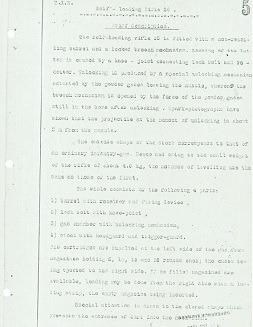

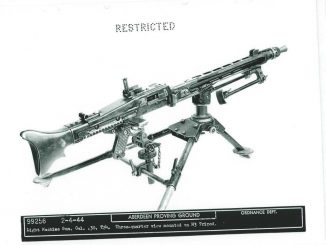
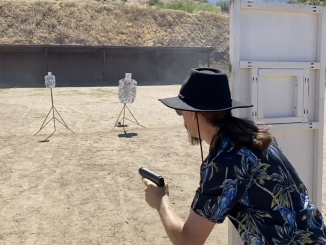
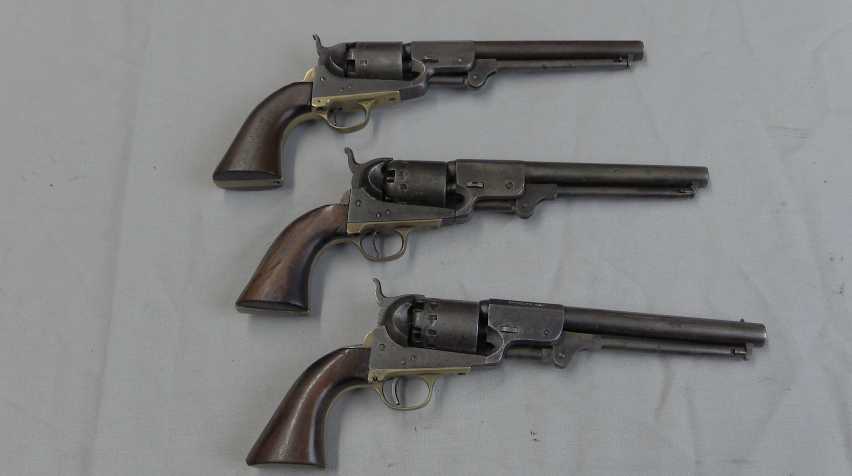
I think Karl Heinemann also worked on the Parabellum aircraft machine gun.
Also the toggle-locked Heinemann model 32 SMG, later produced by FN in 1935. Not sure if it has any relation to the similar Furrer SMG of the early ’40s.
The use of an “operating rod” rather than a typical gas-piston tube is unusual, and may be unique. The toggle action, while different from the Pedersen design, may have had the same problem the Pedersen did, i.e. the testers not liking the toggle “bouncing” up into the shooter’s LOS with every shot.
The side-mounted magazine was probably intended to avoid problems with firing while prone, much as on Rheinmetall’s later FG42.
I might add that the report is clearly directly translated from a German original. As Holmes once said, only a German is so discourteous to his verbs.
cheers
eon
This system is just as fiddly as the Liu rifle’s method of operation. As for the ordinance board going for en-bloc clips rather than detachable magazines (which were probably only detachable for cleaning), I suppose it was because the bureaucrats wanted to balance loading speed against cost of production. How could this rifle have been improved apart from changing the gas trap to a conventional gas vent/piston setup? Please answer if you wish!
Most of that is covered by the Ordnance Board’s objections. I would add a more secure bayonet mount (the one on it looks suspiciously like a Kar.98b mount, which wasn’t all that sturdy), strengthening the stock at the wrist (it looks like there’s enough cut away there for it to crack in service), and either going to a ventilated upper barrel shroud or a series of slots under the barrel like the Pedersen (another way to deal with the barrel cooling issue).
I’m surprised no mention is made of waxed or lubricated cartridges. With this system, which is technically a gas-unlocked short-recoil, I’d expect primary extraction problems without some form of case lubrication. Then again, they may have figured that was already covered due to the Pedersen rifle’s requirements in that area.
A fluted chamber would be another possible solution, as on the H&K rifles from the 1950s on.
cheers
eon
Okay, so let’s reduce the number of fiddly parts (and thus weight), add a barrel band bayonet lug as opposed to the under-barrel lug, change the stock so that it’s stronger at the wrist grip and has cooling slots or a heat shield. We’ll keep the magazine system in place (I don’t like having my thumb getting bolt-slammed in a Garand action) but eliminate the toggle-lock and make this a long-stroke gas-operation so that maintenance won’t be a pain in the rear end. As for the iron sights, I’ll ask actual marksmen for their opinion and tally the results of a survey (and I’ll add a scope rail–choose your favorite scope type). As for caliber, I recommend this be changed to 30×06 or 8x57mm IS (or to be really mean to all of those snobs in Fascist countries, 7.5x55mm GP 11).
Weapon of choice questionnaire:
If the modifications mentioned above were applied to the rifle and you were equipped with it, how do you think you’d do stuck in a dense forest crawling with tank-riding bandit hordes? Or if you had alternatives to shooting them from a tree with an experimental rifle, which would you take?
1. Finnish M39 Mosin-Nagant
2. Type 97 Sniper Rifle
3. M1 Garand
4. Romanian issued variant of MG-15 with water jacket
5. FG-42
6. Sturmgewehr 44
7. 2.5 cm SAL 37 anti-tank cannon
8. M3 Gun Motor Carriage
9. Panzer IV Ausf. J
10. Add your favorite toys to this list!!
Notice: the questionnaire is not a mandatory item. You may ignore it if you wish and please keep any criticism humane.
If I were in a stay-behind snipe situation, counting on movement and concealment to allow me to save my miserable hide after taking a shot (shoot-and-scoot), the 25-round box magazine of the Model 1928 would be an attractive feature.
Note that during WW1, the German Army issued snipers scoped 98 Mausers (usually “Lange”s) with 6x scopes and special 20-round magazines. Still loaded from the top with five-round chargers, but impressive firepower for a bolt-action.
Keep in mind that the ability to deliver several reasonably-accurate shots rapidly would be more important than pinpoint accuracy. Ranges of engagement would be unlikely to be much over 150 meters in such terrain, so you would need to be able to put as many men down as fast as possible, without necessarily making each shot an instant kill. (Schlock Mercenary Guide, Seventy Maxims of Maximally Effective Mercenaries, No.44; If the enemy is within your effective range, you are also within his.)
This is a case where the self-loading rifle with the high-capacity magazine (Model 1928, ZH-29, FG42, whatever) wins over the highly-accurate bolt-action or even the en bloc clip-loading Garand or whatever. Don’t overlook the factors that (1) you are inherently outnumbered (there’s one of you and a truckload of them), and (2) wounding is about as good as killing; wounded men are a logistics problem for the OPFOR.
To say nothing of a morale problem for their infantry who are stuck with the job of catching you.
NB; keep in mind that at some point, you will probably annoy the OPFOR enough that once they have some idea of your position, they may resort to “countersniping” with support artillery.
Both the Russians (Winter War vs. the Finns) and the Germans (Stalingrad, Kiev, etc.) came to the conclusion that the logical “countersniping” weapon was a couple of batteries of 15cm howitzers.
“Close” counts when those things are looking for you. Since “danger close” is on the order of “anywhere within 100 meters of your position”.
cheers
eon
Eon,
Re: Germans and verbs–A Scandal in Bohemia?
The document left all the measurements in metric, generally speaking one would translate the measurements as well as the text if one really wanted the business. But, back then the U.S. army was not that large.
The reference to “spark photography” was interesting, I did not realize that a sort of high speed photography was in use back then.
Exactly.
High-speed spark photography is a bit older than most people think. Dr. Harold Edgerton of MIT was largely responsible for developing it in the form we know today, and he began work not long after WW1.
Fun fact; Edgerton worked with Capt. Jacques Cousteau in developing deep-sea photography in the 1950s. The objective there was taking photographs in a near-total absence of ambient light without spooking the fish too much. Not to mention ones that could survive the pressures outside a bathyscaphe at depths of over 3000 meters.
Edgerton developed special flash units which could take the pressures of even Swire Deep in the Marianas Trench (deepest known point in the oceans, 12,500 meters). His units were used by the U.S. Navy on the bathyscaphe Trieste on Jacques Piccard and Don Walsh’s dive there in 1959, and later during the searches for the sunken submarines Thresher (1964) and Scorpion(1968).
As for not spooking the fish, his units did the job by being synchronized so closely with the shutter release that the actual flash was over with before the fish had time to go “WTF!” and swim away freaking out.
Dr. Edgerton was known to the crew of the Calypso as “Papa Flash”. His son, who was also a Ph.D, was predictably known as “Petit’ Flash”.
cheers
eon
I was fascinated by the Waffen Amt’s obsession with not drilling gas ports in barrels, as described in the Collector Grade book, “Sturmgewehr!”.
Needless to say, it led to a lot of dead ends, missed opportunities and pointless delays in getting the Wehrmacht a functioning semiautomatic/selective fire rifle.
For sheer stubbornness, it rivals the U.S. Army’s later love affair with the dubious creations of Russel Robinson.